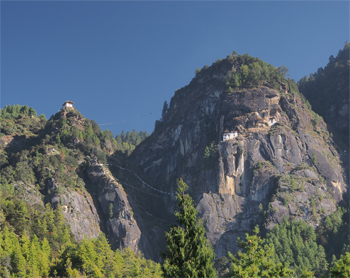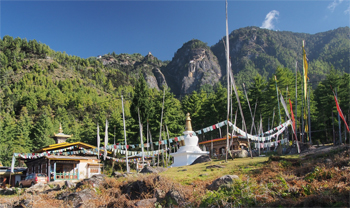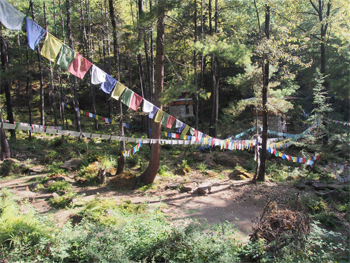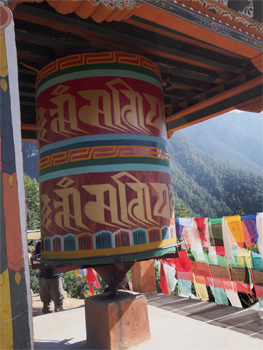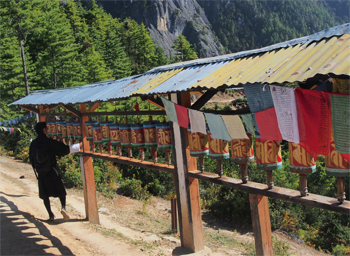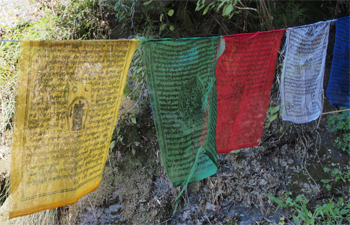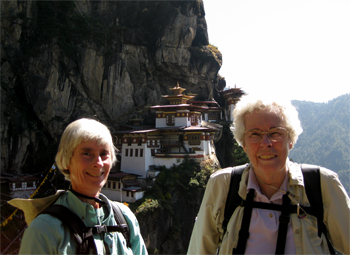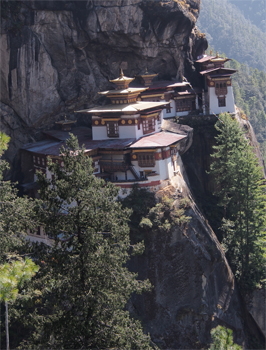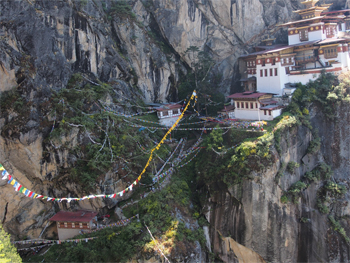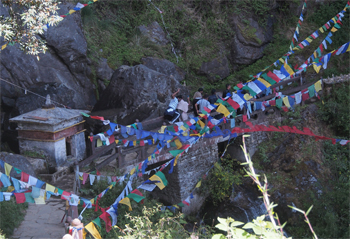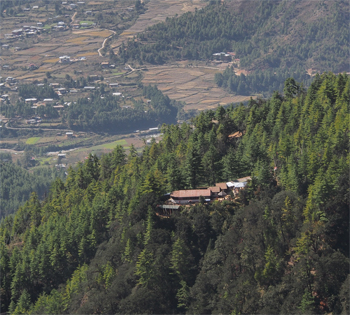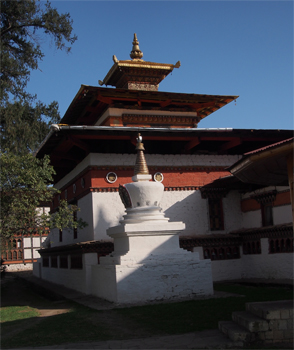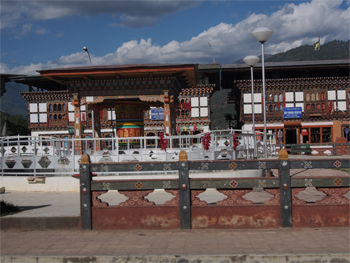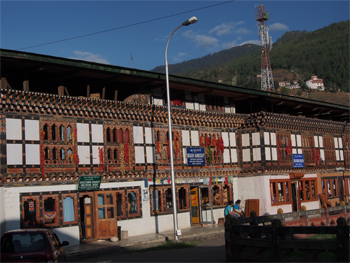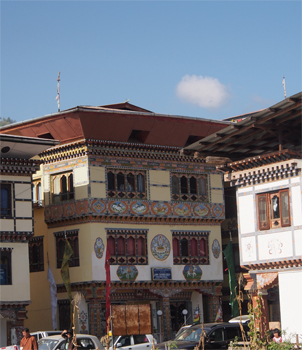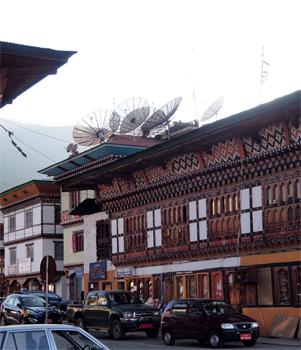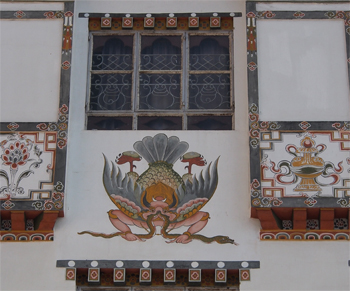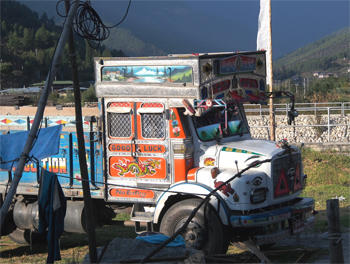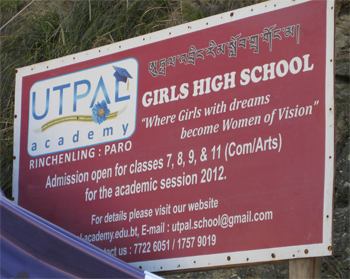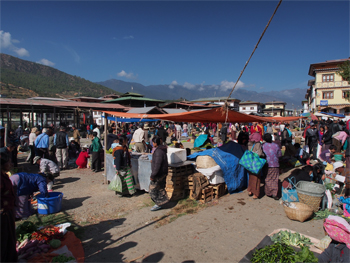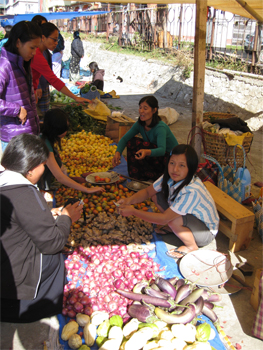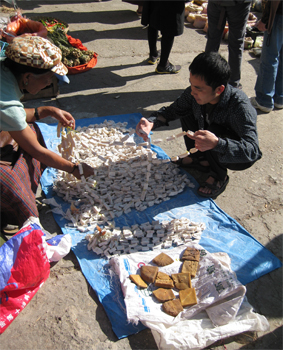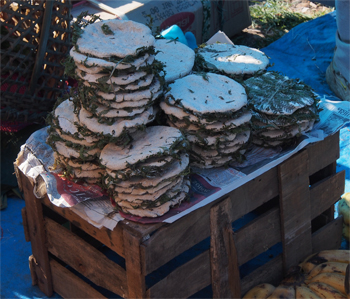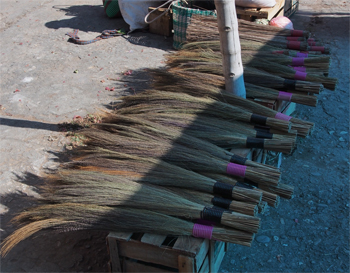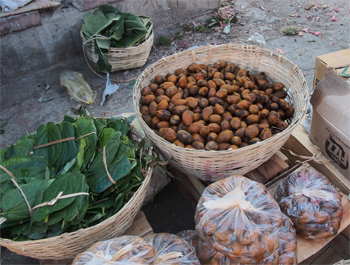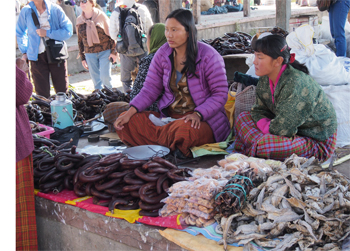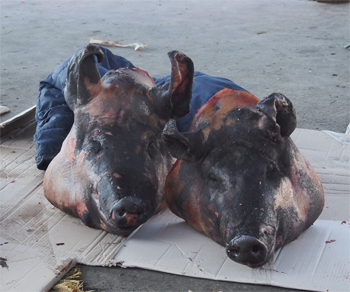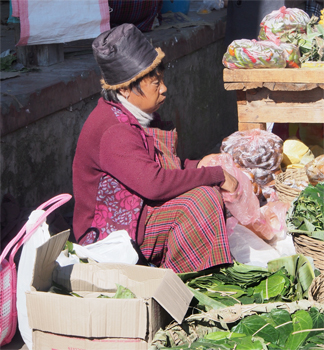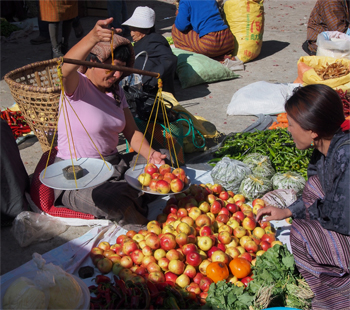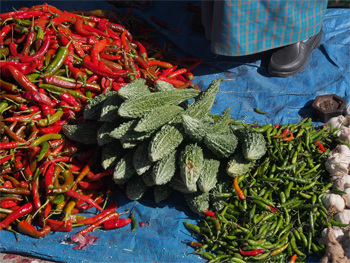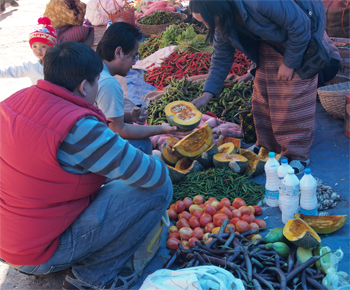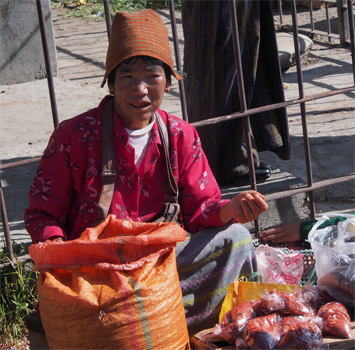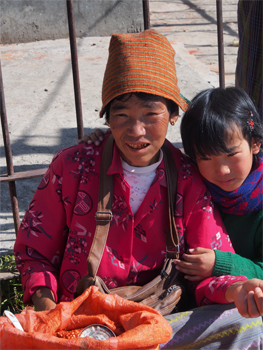Sat., 10/20/12 - Paro: Hike to the Tiger's Nest Monastery
Tiger's Nest Monastery - white structure on the right a ways below the peak |
Stupa along the road to the trail head |
Prayer flags everywhere along the trail |
Large prayer wheel just before the tea house
|
Smaller prayer wheel
|
Prayer flags |
Prayer flags originated in Tibet. Supposedly, the same prayer is written on each flag and means: there is a diamond on top of the lotus flower, may you shine like a diamond. They are printed on five colors: yellow = earth, red = fire, white = air/wind, blue = sky/space, and green = water. These are the five cosmic elements. The wind is to carry the pray to the gods. The approach to the cliff hanging buildings is by 500 stone steps down to a bridge across a waterfall and then 250 steps up to the entry gate (the actual number varies with who is counting them, but there are a LOT).
|
|
Us, just before starting down the 500 steps |
Tiger's Nest Monastery
|
Prayer flags strung across the gorge below the Tiger's Nest Monastery
|
Prayer flags strung across the gorge below the Tiger's Nest Monastery
|
Prayer flags and bridge at the bottom the the 500 steps and before you start of the next 250 steps |
Tea house seen from above
|
Valley below the Tiger's Nest Monastery |
The monastery was built in 1692 at the place were legend has it the Guru Rinpoche flew on the back of his tigress wife from Tibet and meditated for three months in the cave which is inside one of the temples. This is how Buddhism was brought to Bhutan and the Tiger's Nest is a place of pilgrimage. We took off our shoes to enter the three temples (no pictures allowed in any Buddhist temple) and Tashi explained some of the confusing stories of the statues. The gifts/offerings that people bring to feed the deities are clustered at the altars. What the monks don't eat is given to the birds and stray dogs. Buddhists will not kill any living thing so the dogs are everywhere and live off the offerings. They have cows to produce milk and make cheese but they don't slaughter them for meat. Some people will eat the meat once an old cow dies naturally or it is left for the vultures. Rice and lentils and vegetables are their main diet.
|
We hiked back from the Tiger's Nest to the tea house and ate a buffet lunch before heading on down to the bus. On the way to the shopping street in Paro, we stopped at one of the oldest temples in Bhutan, Kyichu Lhakhang. As we entered the temple (in our socks) we heard chanting and watched a dozen monks chanting a funeral ritual in the temple. They chanted and blew horns and oboe-like instruments, beat prayer drums to the chanting tempo, and clanged a cymbal-like instrument. It was noisy but interesting. We looked in at the seventh century Buddha in the temple.
|
Kyichu Lhakhang
|
|
|
Paro main square and prayer wheel
|
Paro street scene |
Paro street scene
|
Paro street scene - note the satellite dishes |
Building decoration - this symbol is seen all over Bhutan |
Decorated trucks - which we saw all over Bhutan and Nepal |
Sun., 10/21/12 - Paro to Punakha, Bhutan
This sign is for Gale
|
Paro market |
Paro market
|
Selling strings of dried yak cheese (white) and smoked (brown) yak cheese
|
Yeast cakes |
A local Bhutanese woman
|
Brooms for sale - we saw these in use all over Bhutan and Nepal
|
Betel nuts and leaves (remember Mary in South Pacific). The old people still crack the nuts with their teeth, wrap the nut inside a betel leaf (often adding a tobacco leaf), squirt some lime juice on it, and suck it. It makes their gums and teeth turn red and it is a mild stimulant, causing a warming sensation in the body (according to Wikipedia).
|
Various kinds of sausages |
Aren't they cute?
|
Selling and chewing betel nuts
|
The old fashioned way to weigh things |
Spiny squash |
Selling squash
|
Local woman
|
With her daughter |
Return to Top Return to Bhutan Itinerary Return to Dreamcatcher Home Page
